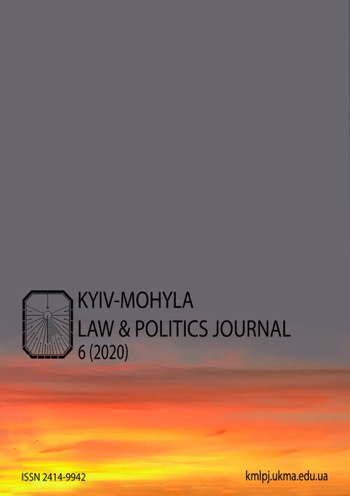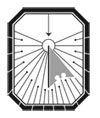Legal Complexities in the Service of Hybrid Warfare
DOI:
https://doi.org/10.18523/kmlpj220732.2020-6.27-43Keywords:
hybrid warfare, lawfare, rules of warfare, use of force, Russia, UkraineAbstract
Hybrid warfare is about using military and non-military measures in a non-linear and complimentary fashion. Different means and methods are not necessarily effective separately, but it is their synergy that leads to the desired outcome. Law has also become a method of warfare. States exploit deliberately legal complexities to strengthen their own positions and to undermine the positions of their opponents. They may wish to keep the intensity of the employed measures below the threshold of the use or threat of force in order to argue that international law has not been breached and that the opponents may not exercise self-defense. States may equally try to avoid the application of the rules of warfare by claiming that the situation has not crossed the threshold of an armed conflict. Because the rules governing the resort to armed force and the conduct of hostilities were drafted for conventional warfare, the ambiguities, loopholes and thresholds in these rules provide opportunities, for better or for worse, in the era of modern warfare.Supporting Agency
- Estonian Research Council grant PRG969.
References
- Bartles, Charles K. “Getting Gerasimov Right.” Military Review (January-February 2016): 30–38.
- Brownlie, Ian. International Law and the Use of Force by States. Oxford: Clarendon Press, 1963.
- Burke, John J. A. “Economic Sanctions against the Russian Federation Are Illegal under Public International Law.” Russian Law Journal 3 (2015): 126–41.
- Charap, Samuel. “The Ghost of Hybrid War.” Survival 57, no. 6 (2017): 51–58.
- Charter of the United Nations, San Francisco, June 26, 1945, entry into force October 24, 1945, 1 UNTS xvi.
- Dinstein, Yoram. War, Aggression and Self-Defence. 5th edn, Cambridge University Press, 2011.
- European Commission. Joint Framework on Countering Hybrid Threats: A European Union Response. April 6, 2016. JOIN (2016) 18 final.
- Geneva Convention for the Amelioration of the Condition of the Wounded and Sick in Armed Forces in the Field, August 12, 1949, entry into force October 21, 1950, 75 UNTS 31.
- Geneva Convention for the Amelioration of the Condition of Wounded, Sick and Shipwrecked Members of Armed Forces at Sea, August 12, 1949, entry into force October 21, 1950, 75 UNTS 85.
- Geneva Convention Relative to the Treatment of Prisoners of War, August 12, 1949, entry into force October 21, 1950, 75 UNTS 135.
- Geneva Convention Relative to the Protection of Civilian Persons in Time of War, August 12, 1949, entry into force October 21, 1950, 75 UNTS 287.
- Gerasimov, Valerij. “Cennost nauki v predvidenii: Novye vyzovy trebuyut pereosmyslit formy i sposoby vedeniya boevyh dejstvij [The Validity of Science is in Prediction: New Challenges Require Rethinking of Forms and Methods of Armed Activities Conduction].” Voenno-promyshlennyj kurer, 27 fevralya 2013. Accessed March 31, 2020. http://www.vpk-news.ru/articles/14632.
- Halper, Stefan. “China: The Three Warfares.” Report to the Office of the Secretary of Defense (May 2013).
- Hoffman, Frank G. Conflict in the 21st Century: The Rise of Hybrid Warfare. Arlington: Potomac Institute for Policy Studies, 2007.
- Hoffman, Frank G. “On Not-So-New Warfare: Political Warfare vs Hybrid Threats.” War on the Rocks, July 28, 2014. Accessed March 31, 2020. https://warontherocks.com/2014/07/on-not-so-new-warfare-political-warfare-vs-hybrid-threats/.
- International Committee of the Red Cross. Commentary on the First Geneva Convention: Convention (I) for the Amelioration of the Condition of the Wounded and Sick in Armed Forces in the Field. 2nd edn, Cambridge: Cambridge University Press, 2016.
- International Court of Justice. Military and Paramilitary Activities in and against Nicaragua (Nicaragua v. United States). Merits. ICJ Reports (1986) 14.
- International Court of Justice. Legal Consequences of the Construction of a Wall in the Occupied Palestinian Territory. Advisory Opinion. ICJ Reports (2004) 136.
- International Court of Justice. Legality of the Threat or Use of Nuclear Weapons. Advisory Opinion. ICJ Reports (1996) 226.
- International Criminal Tribunal for the former Yugoslavia. Prosecutor v. Tadić. Case No. IT-94-1-I. Decision on Defence Motion for Interlocutory Appeal on Jurisdiction.
- Kofman, Michael, and Matthew Rojansky. “A Closer look at Russia’s “Hybrid War”.” Kennan Cable, no. 7 (2015).
- MacAskill, Ewen, “Russian troops removing ID markings ‘gross violation.’” The Guardian, March 6, 2014. Accessed March 31, 2020. https://www.theguardian.com/news/defence-and-security-blog/2014/mar/06/ukraine-gross-violation-russian-troops.
- Mattis, James N., and Frank G. Hoffman. “Future Warfare: The Rise of Hybrid Wars.” Proceedings Magazine 131 (2005): 18–19.
- Ministerstvo inostrannyh del Rossijskoj Federacii. “Pravovye obosnovaniya pozicii Rossii po Krymu i Ukraine [Legal Grounds of Russia’s Position on Crimea and Ukraine].” 27 oktyabrya 2014. Accessed March 31, 2020. http://russische-botschaft.ru/wp-content/uploads/2014/10/Krym-pravovye-osnovy.doc.
- Monaghan, Andrew. “The ‘War’ in Russia’s ‘Hybrid Warfare’.” Parameters 45, no. 4 (2015): 65–74.
- North Atlantic Treaty, Washington, April 4, 1949, entry into force August 24, 1949, 34 UNTS 243.
- North Atlantic Treaty Organization, Allied Joint Doctrine, AJP-01, Edition E Version 1 (February 2017).
- North Atlantic Treaty Organization. “Brussels Summit Declaration.” July 11, 2018. Accessed March 31, 2020. https://www.nato.int/cps/en/natohq/official_texts_133169.htm.
- North Atlantic Treaty Organization. “Statement by the North Atlantic Council.” September 12, 2001. Accessed March 31, 2020. https://www.nato.int/docu/pr/2001/p01-124e.htm.
- North Atlantic Treaty Organization. “Wales Summit Declaration.” September 5, 2014. Accessed March 31, 2020. http://www.nato.int/cps/en/natohq/official_texts_112964.htm.
- North Atlantic Treaty Organization. “Warsaw Summit Declaration.” July 9, 2016. Accessed March 31, 2020. https://www.nato.int/cps/en/natohq/official_texts_133169.htm.
- Lee, Sangkuk. “China’s ‘Three Warfares’: Origins, Applications, and Organizations.” Journal of Strategic Studies 37 (2014): 198–221.
- Protocol Additional (I) to the Geneva Conventions, relating to the Protection of Victims of International Armed Conflicts, June 8, 1977, entry into force December 7, 1978, 1125 UNTS 3.
- Protocol Additional (II) to the Geneva Conventions, relating to the Protection of Victims of Non-International Armed Conflicts, June 8, 1977, entry into force December 7, 1978, 1125 UNTS 609.
- Putin, Vladimir. “Address by President of the Russian Federation.” Accessed March 31, 2020. http://en.kremlin.ru/events/president/news/20603.
- Putin, Vladimir. “Direct Line with Vladimir Putin.” Accessed March 31, 2020. http://en.kremlin.ru/events/president/news/20796.
- Rácz, András. “Hybrid War in Ukraine: Breaking the Enemy’s Ability to Resist.” Finnish Institute of International Affairs Report 43 (2015).
- Reeves, Shane R., and Robert E. Barnsby. “The New Griffin of War: Hybrid International Armed Conflicts.” Harvard International Review 34, no. 3 (2013): 16–18.
- Riva, Alberto. “Russia’s Use of Unmarked Troops in Simferopol, Crimea: Shady, But Not Illegal.” International Business Times, March 4, 2014. Accessed March 31, 2020. https://www.ibtimes.com/russias-use-unmarked-troops-simferopol-crimea-shady-not-illegal-1559425.
- Ruys, Tom. “Armed attack” and Article 51 of the UN Charter: Evolutions in Customary Law and Practice. Cambridge: Cambridge University Press, 2010.
- Schrijver, Nico. “The Ban on the Use of Force in the UN Charter.” In The Oxford Handbook of the Use of Force in International Law, edited by Marc Weller, 465–87. Oxford: Oxford University Press, 2015.
- Schwarzenberger, Georg. “Jus Pacis Ac Belli? Prolegomena to a Sociology of International Law.” American Journal of International Law 37 (1943): 460–79.
- Topychkanov, Petr. ““Hybrid War” – a Scholarly Term or a Propaganda Cliché?” Carnegie Endowment for International Peace, July 17, 2015. Accessed March 31, 2020. https://carnegieendowment.org/2015/07/17/hybrid-war-scholarly-term-or-propaganda-clich%C3%A9.
- Treaty Providing for the Renunciation of War as an Instrument of National Policy, Paris, August 27, 1928, entry into force July 24, 1929, 94 LNTS 57.
- United Kingdom Government, “Defence Secretary’s speech to RUSI on the SDSR 2015.” September 22, 2015. Accessed March 31, 2020. https://www.gov.uk/government/speeches/defence-secretarys-speech-to-rusi-on-the-sdsr-2015.
- United States Army Doctrine Reference Publication 3-0, Operations, October 6, 2017.
- Vité, Sylvain. “Typology of Armed Conflicts in International Humanitarian Law: Legal Concepts and Actual Situations.” International Review of the Red Cross 91, no. 873 (2009).
- Värk, René. “Declared and Undeclared Wars.” Journal on Baltic Security 3, no. 1 (2017): 25–31.
- Wittes, Benjamin. “What Is Hybrid Conflict?” Lawfare, September 11, 2015. Accessed March 31, 2020. https://www.lawfareblog.com/what-hybrid-conflict.
Downloads
Published
How to Cite
Issue
Section
License
Copyright (c) 2020 René Värk

This work is licensed under a Creative Commons Attribution 4.0 International License.
Kyiv-Mohyla Law and Politics Journal provides free access to original research without restriction barriers (i.e. subscription fees, licensing fees etc.).
Unless otherwise indicated, content is licensed under the Creative Commons Attribution 4.0 International (CC BY 4.0) license, which means you are free to:
distribute, remix, tweak, and build upon your work, even commercially
...provided that any use is made with attribution to author(s) and Kyiv-Mohyla Law and Politics Journal.
The copyright in the article or any other submission to Kyiv-Mohyla Law and Politics Journal shall remain with the author(s).
The journal allows the author(s) to hold the copyright without restrictions and will retain publishing rights without restrictions.





